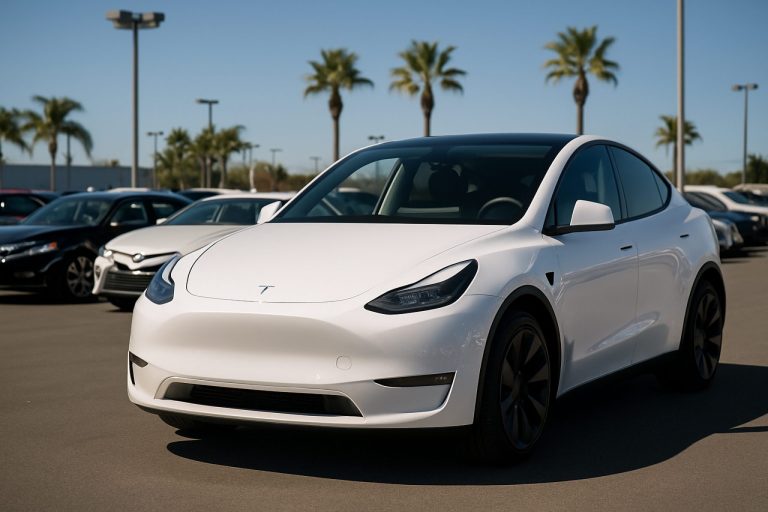
Decentralized Lending Protocols Market Report 2025: In-Depth Analysis of Growth Drivers, Technology Innovations, and Global Trends. Explore Key Opportunities and Challenges Shaping the Next 3–5 Years.
- Executive Summary & Market Overview
- Key Technology Trends in Decentralized Lending Protocols
- Competitive Landscape and Leading Protocols
- Market Growth Forecasts (2025–2030): CAGR, Volume, and Value Projections
- Regional Analysis: Adoption and Regulatory Developments by Geography
- Future Outlook: Emerging Use Cases and Institutional Involvement
- Challenges and Opportunities: Security, Scalability, and Regulatory Risks
- Sources & References
Executive Summary & Market Overview
Decentralized lending protocols are blockchain-based platforms that enable users to borrow and lend digital assets without relying on traditional financial intermediaries. By leveraging smart contracts, these protocols automate the process of matching lenders and borrowers, setting interest rates, and managing collateral, thereby reducing costs and increasing transparency. As of 2025, decentralized lending has become a cornerstone of the decentralized finance (DeFi) ecosystem, with protocols such as Aave, Compound, and MakerDAO leading the market in terms of total value locked (TVL) and user adoption.
The global DeFi market has experienced robust growth, with the total value locked in decentralized lending protocols surpassing $60 billion in early 2025, according to DefiLlama. This growth is driven by increasing demand for alternative financial services, the proliferation of stablecoins, and the expansion of blockchain networks beyond Ethereum to include platforms like Polygon and Solana. Institutional participation has also accelerated, as traditional financial entities explore DeFi integrations and partnerships to access new revenue streams and diversify risk.
- Key Drivers: The main factors fueling the rise of decentralized lending include the global push for financial inclusion, the need for permissionless access to credit, and the appeal of higher yields compared to traditional savings products. Additionally, the composability of DeFi protocols allows for innovative financial products and services to be built on top of existing infrastructure.
- Challenges: Despite rapid adoption, the sector faces challenges such as regulatory uncertainty, smart contract vulnerabilities, and liquidity risks. Regulatory bodies like the U.S. Securities and Exchange Commission and the European Securities and Markets Authority are increasingly scrutinizing DeFi activities, which could impact future growth trajectories.
- Outlook: Looking ahead, the decentralized lending market is expected to continue expanding, with innovations in cross-chain interoperability, risk management, and decentralized identity solutions. Market analysts from McKinsey & Company and Bain & Company project that DeFi lending could capture a significant share of the global lending market by 2030, particularly in emerging economies where access to traditional banking remains limited.
In summary, decentralized lending protocols are reshaping the financial landscape in 2025, offering both opportunities and challenges as the sector matures and integrates with the broader financial system.
Key Technology Trends in Decentralized Lending Protocols
Decentralized lending protocols are rapidly evolving, driven by technological innovation and shifting user demands. In 2025, several key technology trends are shaping the landscape of decentralized finance (DeFi) lending, enhancing security, efficiency, and accessibility.
- Layer 2 Scaling Solutions: To address Ethereum’s congestion and high transaction fees, leading protocols are integrating Layer 2 technologies such as Optimistic Rollups and zk-Rollups. These solutions significantly reduce costs and increase throughput, enabling platforms like Aave and Compound to offer faster, cheaper lending and borrowing experiences.
- Cross-Chain Interoperability: The rise of cross-chain bridges and interoperability protocols is allowing assets and liquidity to flow seamlessly between different blockchains. Projects such as Chainlink and Wormhole are facilitating secure data and asset transfers, enabling decentralized lending platforms to expand beyond Ethereum and tap into broader liquidity pools.
- Algorithmic Credit Scoring: Traditional overcollateralization is being challenged by on-chain credit scoring models. Protocols are leveraging user transaction histories, social data, and machine learning to assess creditworthiness, as seen in initiatives by Goldfinch and TrueFi. This trend is expected to unlock undercollateralized and unsecured lending, broadening access to DeFi.
- Decentralized Identity (DID) Integration: The adoption of decentralized identity standards is enabling more robust KYC/AML compliance without compromising user privacy. Solutions from Spruce and Sovrin Foundation are being integrated into lending protocols, paving the way for institutional participation and regulatory alignment.
- Automated Risk Management: Advanced risk assessment tools powered by AI and real-time analytics are being deployed to monitor protocol health, collateral volatility, and systemic risks. Platforms like Gauntlet are providing simulation and optimization services, helping protocols dynamically adjust parameters to maintain stability and protect users.
These technology trends are collectively driving decentralized lending protocols toward greater scalability, inclusivity, and resilience, positioning DeFi as a formidable alternative to traditional financial systems in 2025 and beyond.
Competitive Landscape and Leading Protocols
The competitive landscape of decentralized lending protocols in 2025 is characterized by both consolidation among established players and the emergence of innovative challengers. The sector remains dominated by a handful of protocols that have achieved significant total value locked (TVL), robust security records, and broad user adoption. Aave, Compound, and MakerDAO continue to lead the market, collectively accounting for a substantial share of the sector’s TVL, which surpassed $30 billion in early 2025 according to DeFiLlama.
Aave maintains its leadership through continuous product innovation, such as the rollout of cross-chain lending pools and risk mitigation features like isolation mode and supply caps. Its governance model, which empowers token holders to propose and vote on protocol upgrades, has fostered a dynamic ecosystem and rapid adaptation to market needs. Compound, meanwhile, has focused on institutional adoption, offering compliance-friendly features and integrating with traditional finance partners. MakerDAO, the pioneer of decentralized stablecoin lending, has expanded its collateral types and introduced real-world asset (RWA) integrations, further diversifying its risk profile and revenue streams.
New entrants and specialized protocols are also shaping the competitive landscape. Protocols like Venus (on BNB Chain) and JUST (on TRON) have gained traction in non-Ethereum ecosystems, catering to users seeking lower transaction fees and alternative collateral options. Additionally, protocols such as Morpho and Gearbox are experimenting with peer-to-peer matching and leveraged lending, respectively, aiming to optimize capital efficiency and user returns.
- Security and Audits: Security remains a key differentiator, with leading protocols investing heavily in audits, bug bounties, and insurance funds. High-profile exploits in 2023 and 2024 have heightened user scrutiny and regulatory attention.
- Interoperability: Cross-chain compatibility is increasingly important, with protocols expanding to multiple blockchains to capture new user bases and liquidity sources.
- Regulatory Adaptation: As global regulatory frameworks evolve, protocols that proactively implement compliance features—such as KYC modules or whitelisted pools—are better positioned to attract institutional capital.
In summary, the decentralized lending protocol market in 2025 is marked by a blend of established leaders and agile innovators, with competition driven by security, interoperability, and regulatory readiness.
Market Growth Forecasts (2025–2030): CAGR, Volume, and Value Projections
The decentralized lending protocols market is poised for robust expansion between 2025 and 2030, driven by increasing adoption of decentralized finance (DeFi) solutions, growing institutional participation, and ongoing innovation in blockchain technology. According to projections by Grand View Research, the global DeFi market—which includes decentralized lending—was valued at approximately USD 13.6 billion in 2023 and is expected to register a compound annual growth rate (CAGR) of over 46% from 2025 to 2030. Within this segment, decentralized lending protocols are anticipated to be among the fastest-growing categories, fueled by demand for permissionless, transparent, and efficient lending mechanisms.
Volume projections indicate that the total value locked (TVL) in decentralized lending protocols could surpass USD 150 billion by 2030, up from an estimated USD 40 billion in 2025, as reported by Consensys. This surge is expected to be underpinned by the proliferation of new lending products, cross-chain interoperability, and the integration of real-world assets (RWAs) into DeFi platforms. The increasing participation of both retail and institutional investors is likely to further accelerate TVL growth, with protocols such as Aave, Compound, and MakerDAO projected to maintain significant market share while new entrants drive innovation and competition.
In terms of value, the decentralized lending market is forecasted to reach a valuation of approximately USD 80–100 billion by 2030, according to Statista. This growth will be supported by the expansion of lending use cases, including undercollateralized and uncollateralized loans, as well as the adoption of decentralized identity and credit scoring solutions. The Asia-Pacific region is expected to exhibit the highest CAGR, reflecting rapid digital asset adoption and favorable regulatory developments.
Overall, the period from 2025 to 2030 is set to witness transformative growth in decentralized lending protocols, with market participants focusing on scalability, security, and regulatory compliance to capture emerging opportunities and address evolving risks.
Regional Analysis: Adoption and Regulatory Developments by Geography
Decentralized lending protocols are experiencing varied adoption rates and regulatory responses across global regions in 2025, reflecting differences in financial infrastructure, regulatory maturity, and digital asset penetration.
North America remains a leader in decentralized lending adoption, driven by a robust crypto ecosystem and institutional participation. The United States, in particular, has seen increased engagement from both retail and institutional investors, with protocols like Aave and Compound reporting significant TVL (Total Value Locked) growth. However, regulatory scrutiny has intensified, with the U.S. Securities and Exchange Commission and FINRA issuing new guidance on DeFi activities, focusing on consumer protection and anti-money laundering (AML) compliance. Canada, meanwhile, has adopted a more collaborative approach, with the Ontario Securities Commission piloting regulatory sandboxes for DeFi projects.
Europe is characterized by a harmonized regulatory push, particularly with the implementation of the Markets in Crypto-Assets (MiCA) regulation. The European Securities and Markets Authority is working to standardize DeFi oversight, which has encouraged mainstream financial institutions to explore decentralized lending partnerships. Adoption is strongest in Germany, France, and Switzerland, where clear legal frameworks have fostered innovation and cross-border DeFi collaborations.
Asia-Pacific presents a mixed landscape. Singapore and Hong Kong have emerged as DeFi hubs, supported by progressive regulatory frameworks from the Monetary Authority of Singapore and Hong Kong Securities and Futures Commission. These jurisdictions have attracted global DeFi projects and venture capital, resulting in rapid protocol adoption. Conversely, China maintains strict prohibitions on decentralized crypto activities, pushing innovation to offshore markets. Japan and South Korea are cautiously opening up, with pilot programs and regulatory consultations underway.
- Latin America is witnessing grassroots adoption, particularly in Brazil and Argentina, where inflation and limited banking access drive demand for decentralized lending. Regulatory clarity is still evolving, but central banks are monitoring DeFi’s impact on financial stability.
- Africa is an emerging market for decentralized lending, with Nigeria and Kenya leading in user growth. Regulatory frameworks are nascent, but the potential for financial inclusion is drawing attention from both local authorities and international organizations.
Overall, 2025 sees decentralized lending protocols navigating a patchwork of regulatory environments, with adoption closely tied to the clarity and flexibility of local regulations and the maturity of digital asset markets.
Future Outlook: Emerging Use Cases and Institutional Involvement
Looking ahead to 2025, decentralized lending protocols are poised for significant evolution, driven by both emerging use cases and deepening institutional involvement. The maturation of DeFi infrastructure is enabling a broader array of financial products, moving beyond simple overcollateralized loans to more sophisticated offerings such as undercollateralized lending, real-world asset (RWA) integration, and credit delegation. These innovations are expected to unlock new liquidity sources and attract a wider user base, including traditional financial institutions.
One of the most promising emerging use cases is the tokenization of real-world assets—such as real estate, invoices, and commodities—which can be used as collateral within decentralized lending platforms. Protocols like Centrifuge and MakerDAO are already piloting RWA-backed loans, and industry analysts anticipate that by 2025, the volume of tokenized assets in DeFi could reach hundreds of billions of dollars, significantly expanding the addressable market for decentralized lending Boston Consulting Group.
Institutional involvement is also set to accelerate. Major financial players are increasingly exploring DeFi protocols for yield generation, liquidity provision, and risk diversification. In 2024, JPMorgan and Société Générale conducted pilot projects using DeFi lending protocols for on-chain repo transactions and digital bond issuance, signaling a shift toward mainstream adoption CoinDesk. By 2025, it is expected that more banks, asset managers, and fintech firms will participate directly in decentralized lending, either through partnerships, white-labeled solutions, or by launching their own compliant protocols.
- Regulatory-compliant DeFi: Protocols are developing permissioned pools and KYC/AML layers to meet institutional requirements, paving the way for regulated entities to engage in decentralized lending Aave.
- Cross-chain interoperability: Enhanced interoperability will allow assets and liquidity to flow seamlessly across multiple blockchains, further increasing the utility and reach of lending protocols Chainlink.
- Algorithmic credit scoring: The integration of on-chain and off-chain data for decentralized credit assessment is expected to reduce collateral requirements and expand access to credit.
In summary, 2025 will likely mark a pivotal year for decentralized lending protocols, as they transition from niche DeFi products to integral components of the global financial system, driven by innovative use cases and robust institutional participation.
Challenges and Opportunities: Security, Scalability, and Regulatory Risks
Decentralized lending protocols, which facilitate peer-to-peer borrowing and lending without intermediaries, are reshaping the financial landscape. However, as these protocols mature in 2025, they face a complex interplay of challenges and opportunities, particularly in the areas of security, scalability, and regulatory risk.
Security remains a paramount concern. Despite advances in smart contract auditing and bug bounty programs, high-profile exploits continue to plague the sector. In 2024, several protocols suffered losses exceeding $100 million due to vulnerabilities in code and oracle manipulation attacks, underscoring the persistent risk of smart contract bugs and the need for robust, ongoing security assessments. The adoption of formal verification methods and real-time monitoring tools is increasing, but the rapid pace of innovation often outstrips the ability to secure new features and integrations Chainalysis.
Scalability is another critical challenge. As user adoption grows, Ethereum-based protocols face congestion and high transaction fees, which can deter smaller participants and limit overall market growth. Layer-2 solutions and alternative blockchains (such as Arbitrum, Optimism, and Solana) are being integrated to address these issues, offering faster and cheaper transactions. However, cross-chain interoperability introduces new technical complexities and potential security vulnerabilities. Protocols that successfully implement seamless, secure multi-chain operations are likely to capture greater market share in 2025 The Block.
Regulatory risks are intensifying as global authorities scrutinize decentralized finance (DeFi). In 2024, the U.S. Securities and Exchange Commission (SEC) and other regulators signaled intent to apply existing securities and anti-money laundering (AML) laws to DeFi platforms, raising questions about protocol governance, KYC requirements, and liability for code contributors. Some protocols are experimenting with decentralized autonomous organizations (DAOs) and compliance layers to mitigate these risks, but regulatory uncertainty remains a significant barrier to institutional adoption U.S. Securities and Exchange Commission.
- Opportunities include the potential for decentralized lending protocols to expand financial inclusion, offer innovative collateral models, and integrate with real-world assets. Protocols that prioritize security, scalability, and proactive regulatory engagement are best positioned to thrive in the evolving landscape.
Sources & References
- Aave
- Compound
- Polygon
- Solana
- European Securities and Markets Authority
- McKinsey & Company
- Bain & Company
- Chainlink
- Wormhole
- Goldfinch
- Spruce
- Gauntlet
- Venus
- JUST
- Morpho
- Gearbox
- Grand View Research
- Consensys
- Statista
- FINRA
- Ontario Securities Commission
- Monetary Authority of Singapore
- Hong Kong Securities and Futures Commission
- Centrifuge
- JPMorgan
- Société Générale
- CoinDesk
- Chainlink
- Chainalysis



